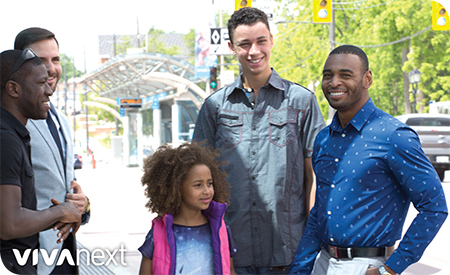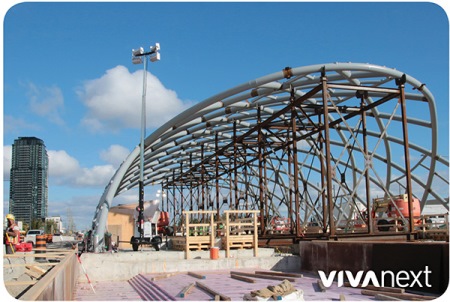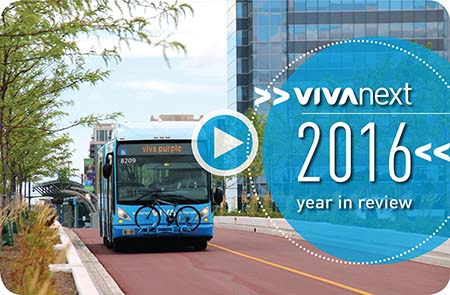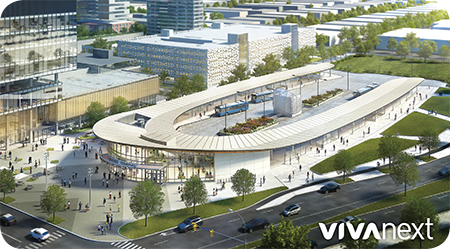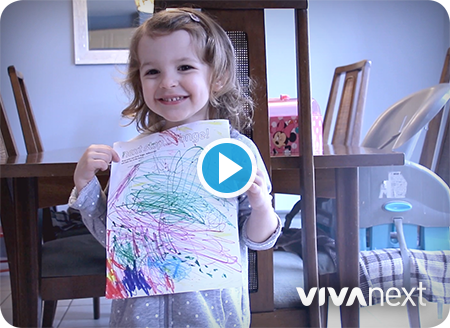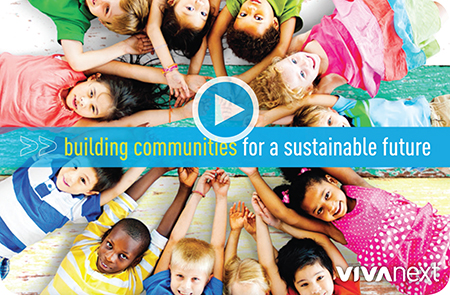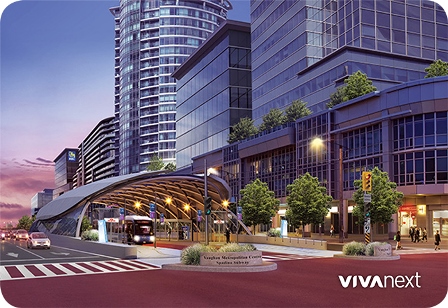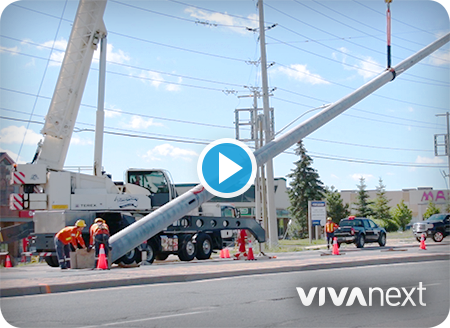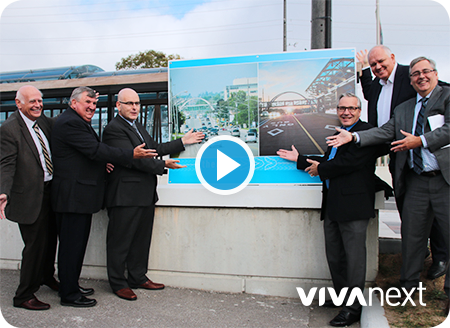
If you’ve been near the future Vaughan Metropolitan Centre [VMC] vivastation recently, you’ve likely seen our welding crews up on man-lifts. And if you’re like most people, you probably didn’t give the welding process much thought – welding is welding, right? Lots of protective clothing, impressive clouds of sparks, and something gets permanently stuck to something else.
Of course, as always with all our engineering and construction activities, there’s so much more going on than meets the eye, and welding on the VMC station is no exception. Here’s the primer on what they’re doing up there, and what some of the complexities are.
Since we’re talking vivaNext, form and function both matter. There are two ways to join two pieces of metal: bolting them together, or welding them. Bolting works well enough, and is the most common method used on bridges, high rises and many other structures. But bolts show, and when the design – as for the VMC station – is for a smooth, seamless architectural look, bolts would be out of place. So welding was chosen as the method to join the pieces of steel throughout the structure.
Welding design takes into account the ultimate strength and performance needed from the structure being joined together, including the loads it will bear, and any flexibility it will require. In the case of the station’s steel superstructure, we are using “full penetration” welding. That means that the two elements being welded together are literally being fused into one piece. Rather than one piece being stuck onto the other, enough heat is applied that the two pieces melt and become one at a molecular level. With this type of welding, it’s not just one surface being glued to another; the joint literally goes through the full depth of the elements being connected. The resulting element is as strong structurally as one solid piece of material.
Once the weld is done, it is reviewed by the welding contractor for certification that the weld meets the required standards including having no impurities or voids. The reviews are generally done visually, although in some cases x-rays will be used. Our general contractor will also do their own quality control, and carry out random spot-checks on many of the welds.
In general, welding can be done until the temperature drops to -18 Celsius. But this specialized kind of welding requires warmer outside temperatures. When temperatures are -5 or below, some weld areas may need to be pre-heated with electrodes.
We’re moving as fast as we can to get the roughly 200 structural welds done, with welders working in shifts, each safely attached by full harnesses to a man-lift while they’re up high. Once the sparks are finished, and because it’s too cold out to paint steel, our last step will be to protect the welded areas with an anti-rust finish.
If you’re in the VMC area, we hope you’ll slow down and look around you. If you do, you’ll be able to admire up close its sleek, architectural lines, and understand all the work that went into making the steel superstructure smooth, strong and beautiful.

